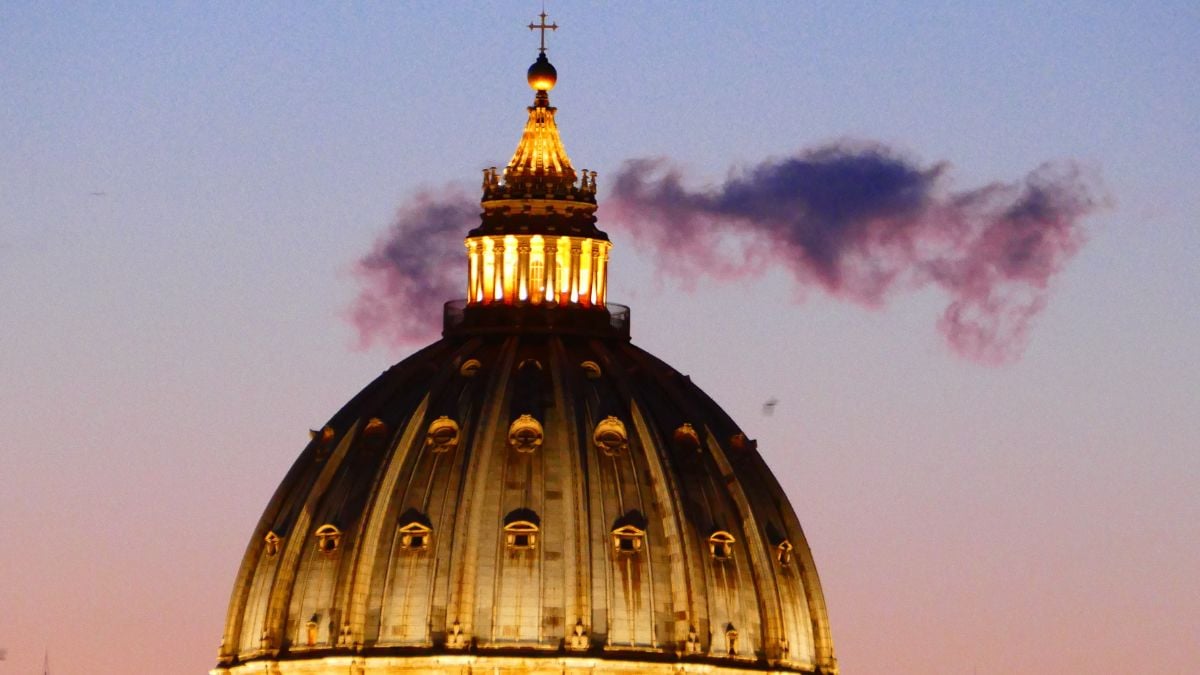
On May 7, the world turned its eyes to the Vatican. A cloud of dark smoke emerged from the chimney installed on the roof of the Sistine Chapel: the famous black smoke. It is the universal and unmistakable signal that the cardinals have not yet reached the consensus required to elect the new Pope, successor to Francis.
After the death of Pope Francis and nine days of mourning, the conclave began to elect the 267th successor of Saint Peter. In this process, steeped in tradition, symbolism, and mysticism, the black smoke reminds the world that, for now, there is no habemus papam.
READ ALSO. Who is Carlos Aguiar Retes? The Mexican cardinal who could become Pope
Who can vote for the new Pope?
Only cardinals under the age of 80 are entitled to vote in the conclave. In this edition, the number of elector cardinals is 133.
These cardinals come from 71 different countries, reflecting the global diversity of the Church. Europe has the largest representation (53 electors), followed by Asia (23), Africa (18), South America (17), North America (16), Central America (4), and Oceania (4). The countries with the most elector cardinals are Italy (17), the United States (10), and Brazil (7).
How many votes are needed to become Pope?
The question many ask after seeing the black smoke is simple: how many votes does a cardinal need to become the new Pope?
According to the conclave rules set by the apostolic constitution Universi Dominici Gregis, a qualified two-thirds majority of the present cardinals is required. If all 133 expected cardinals participate, this means the candidate must receive at least 89 votes to be proclaimed the next Pope.
The cardinals cast their votes in secret, writing by hand on a ballot the Latin phrase Eligo in Summum Pontificem (I elect as Supreme Pontiff), followed by the name of their candidate. The ballots are placed in a chalice and carefully counted. After each round, they are burned along with a chemical mixture that produces the symbolic smoke: black if there is no consensus; white if a new Pope has been chosen.
What happens after the first black smoke?
The first vote, traditionally held in the afternoon of the first day of the conclave, rarely results in an election. It is usually symbolic, a kind of rehearsal that shows the initial preference map. From the second day onward, the voting rounds intensify: two votes in the morning and two in the afternoon, until one of the candidates obtains the necessary votes to reach the majority.
Each time no agreement is reached, a new black smoke appears. But as soon as a candidate secures the required votes and accepts the position, the signal changes: the world will see white smoke, accompanied by the bells of St. Peter’s and, shortly after, the long-awaited balcony announcement: Habemus Papam.
How long was the longest conclave?
Although modern conclaves tend to be brief, history records longer processes. The longest lasted almost three years, from 1268 to 1271, due to political divisions among the cardinals.
How long did the conclaves of Pope John Paul II, Pope Benedict XVI, and Pope Francis last?
The most recent conclaves have been relatively short:
- Francis (2013): 2 days, 5 ballots
- Benedict XVI (2005): 2 days, 4 ballots
- John Paul II (1978): 3 days, 8 ballots
- John Paul I (1978): 2 days, 4 ballots
- Paul VI (1963): 3 days, 6 ballots
- Pius XII (1939): 2 days, 3 ballots
This suggests that, despite the complexity of the current moment, we could know the new Pope within days.
What does the habemus papam represent?
The habemus papam is not just a ritual formula. It is a moment loaded with spiritual and political significance. The proto-deacon cardinal —this time, Dominique Mamberti— will be in charge of announcing the name of the new pontiff to thousands of faithful gathered in St. Peter’s Square and millions more watching around the world.
After accepting the election with the word “Accepto,” the chosen one will enter the so-called Room of Tears, where he will be dressed in the white papal cassock. He will then appear before the world to give his first urbi et orbi blessing.
What does conclave mean and why is it so important?
The conclave is the process by which the Catholic Church elects its new Pope. The word conclave comes from the Latin *cum clave*, meaning “with key,” referring to the fact that the elector cardinals are locked in the Sistine Chapel under strict isolation to deliberate and vote for the successor of Saint Peter.
This procedure is not new. It dates back to the 13th century when the papacy remained vacant for over three years, prompting Pope Gregory X to institutionalize a more expedited and confidential system. Since then, the conclave has been synonymous with secrecy, solemnity, and divine decision. It is the most important moment in the Vatican’s internal life and, at the same time, a globally anticipated event.
Cardinals under the age of 80 who are eligible to vote are secluded in the Sistine Chapel without mobile phones, cameras, or access to media. This tradition aims to preserve the secrecy of discussions and reinforce the spiritual dimension of the process. The isolation is not merely symbolic: throughout the conclave period, the electors stay inside the Vatican with no contact with the outside world.










